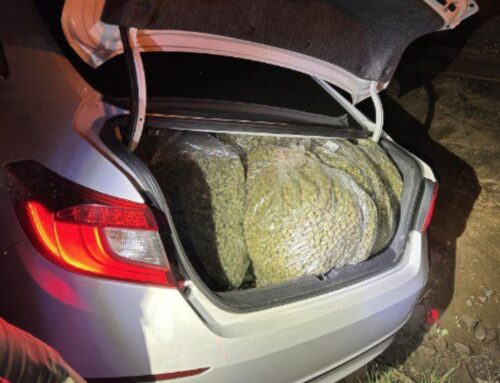‘It’s more than a plant that will get you high’: The crossroad of cannabis and constructio
April 22, 2025
MADISON, Wis. (WMTV) – As a part of UW- Madison’s EarthFest event, graduate students, researchers and panelists discussed cannabis research at the Cannabis Research Conference on Tuesday.
Addressing the use and science of cannabis, the panels included discussions about agriculture, business, health and policy.
Panelist Zach Popp is founder and president of Sativa Building Systems, but his business idea came from his role as a father.
“My daughter at the time was very sick, she was very sick the whole winter because of mold toxicity in our house,” Popp explained. “It really set me on this journey to try to find a building material that could’ve prevented that, because like I said she was sick for a whole winter and we really didn’t know why.”
Popp, concerned about his daughter’s health, combined his discovery of hemp, with his background in construction. That’s when he found Hempcrete, an ecofriendly building material made from part of the hemp plant.
“And I thought, that’s a material that could potentially solve this problem, because hempcrete is mold resistant, fire resistant, pest resistant and rot resistant,” Popp explained.
Hempcrete is a building material made from the herd of industrial hemp plants, a lime-based solution and water.
“The herd is the inner woody part of the hemp stalk, for the longest time people kind of considered it the waste product of the hemp plant,” Popp said.
Assistant Professor of plant and agroecosystem sciences at UW Madison, Shelby Ellison explained the difference between industrial hemp and the type of cannabis that causes a high.
“The further defined categories of cannabis sativa are the drug type cannabis that has a high THC amount that is that psychoactive component of cannabis sativa, and then there is hemp, or industrial hemp,” she said.
She said use of industrial hemp in long term projects like building materials, is a massive benefit to the environment on a molecular level.
“Those are products where you are actually sequestering carbon dioxide that is getting fixed into the plant, and then that plant is holding onto that carbon for a long period of time, so it’s not being released as carbon dioxide back into the environment,” Ellison said.
The 2018 Farm Bill allowed Wisconsinites to grow hemp, which Popp said opened up doors for local business.
“The difference now is that I can source hemp locally, which is huge so partly why I’m here today to network and make relationships with people that are growing here locally,” he said.
He said his daughter, his business, and the environment are being positively affected by the use of cannabis.
“It is more than just a product that will get you high,” Ellison added.
In the state of Wisconsin, the legality of cannabis is determined by the amount of THC it contains. Hemp is classified as containing 0.3% or less THC.
This was the first Cannabis Research Conference, and panelists shared that they hope to conduct more research on the plant and its uses through the University.
Click here to download the WMTV15 News app or our WMTV15 First Alert weather app.
Copyright 2025 WMTV. All rights reserved.
Search
RECENT PRESS RELEASES
Related Post


